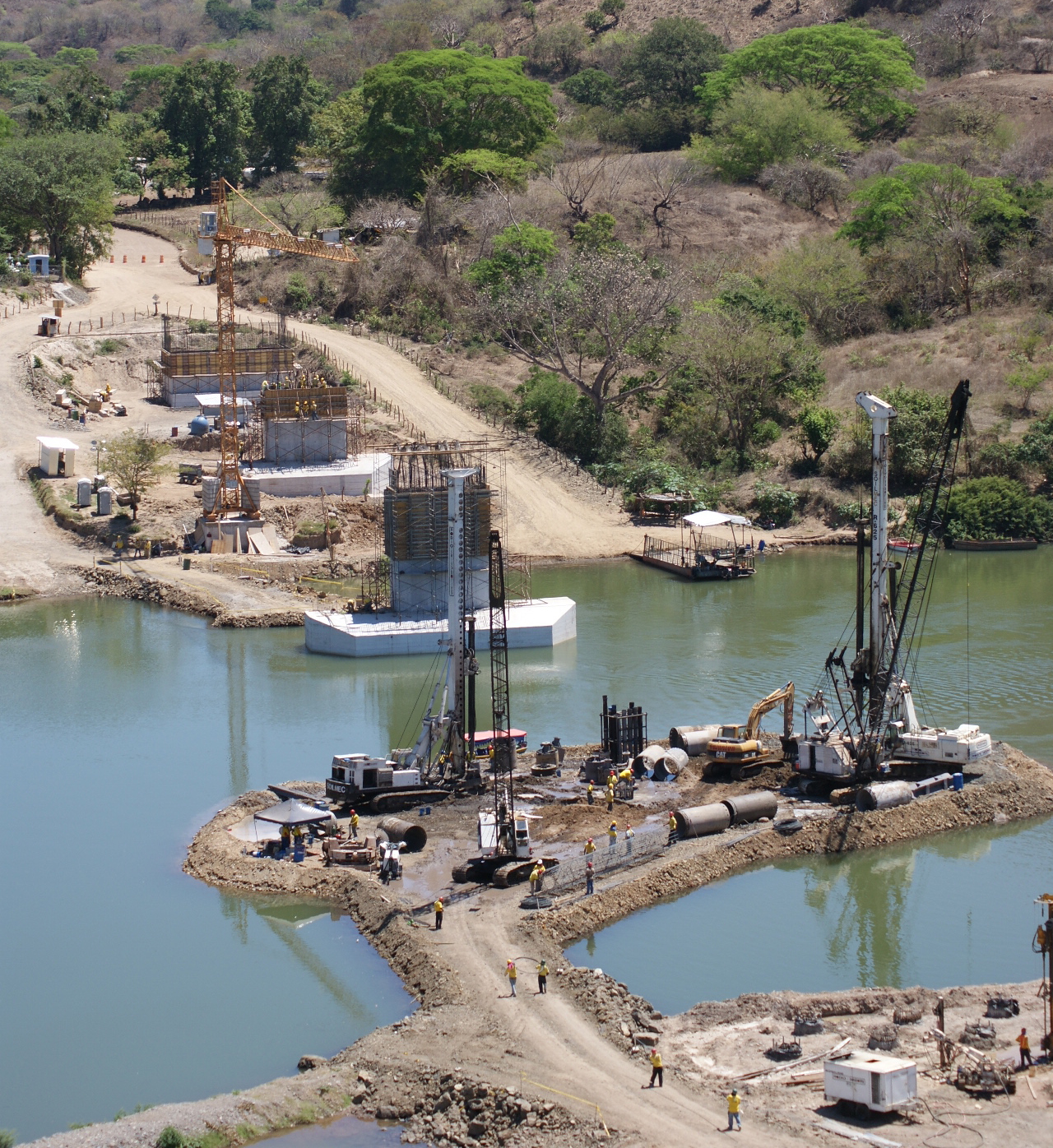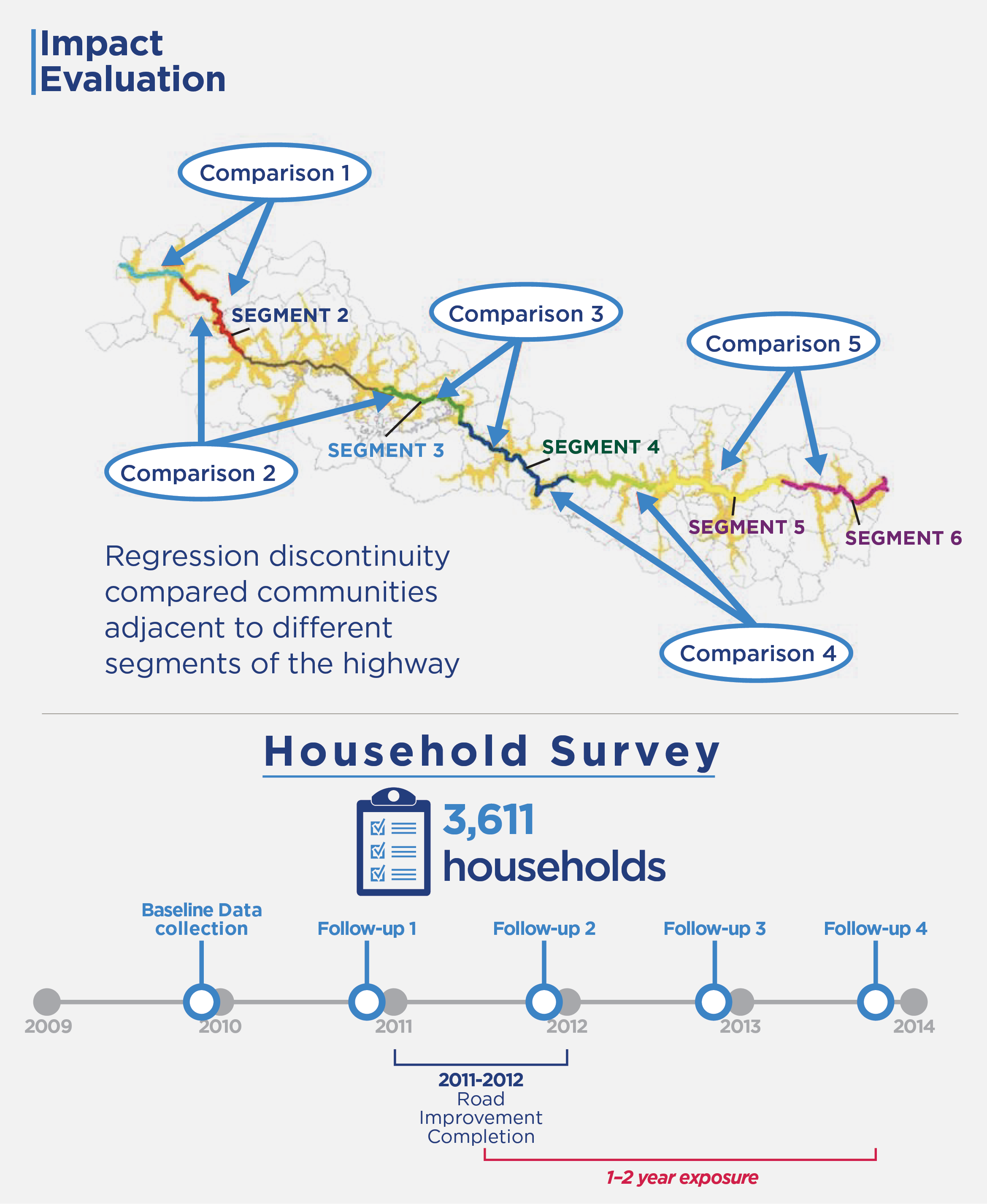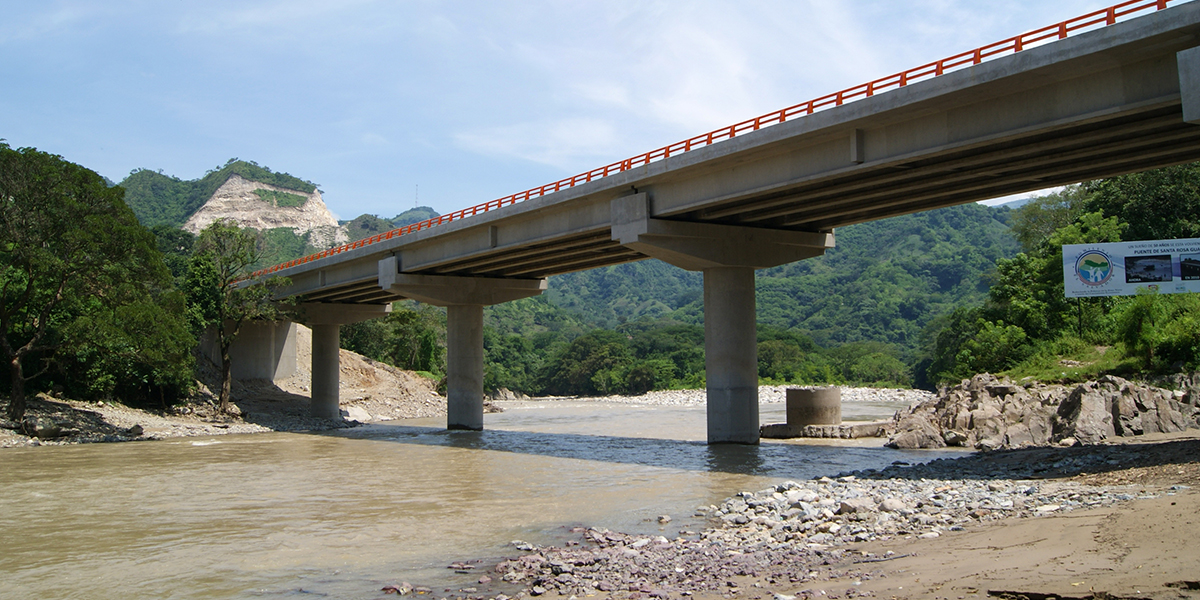Program Overview
MCC’s $449.6 million El Salvador Compact (2007-2012) funded the $268 million Connectivity Project to build, improve, or rehabilitate 23 bridges and 223 kilometers of the road. The project was based on the theory that reducing transportation costs would facilitate market access, increase productive land use, improve the use of health and education services, and ultimately increase household income.Evaluator Description
MCC commissioned Social Impact and the International Food Policy Research Institute to conduct an independent interim impact evaluation of the Connectivity Project. Full report results and learning: https://data.mcc.gov/evaluations/index.php/catalog/135.
Key Findings
Access to Markets and Public Services
- The project improved travel times to a household’s nearest market by 3-18 minutes, and households near improved road segments were more likely to change their market of choice.
- Highway construction modestly reduced travel times to various services, such as schools, hospitals, and banks.
Agricultural Outcomes and Time Allocation
- In the evaluation period, the project neither impacted the probability of households cultivating cash crops nor the selling of agricultural production.
- Women reported spending less time doing agricultural work with an increase in non-agricultural hours of work, though the effect was mostly driven by reductions in leisure time and less so from the reallocation of agricultural work.
Household Income and Macro-Regional Impacts
- Within the one-to-two-year follow-up period, there was no evidence that the project increased land values or tenure, nor that it increased household expenditure or income.
- Simulation models suggest that improving the transportation network had a much smaller impact on gross domestic product (GDP) growth than increasing agricultural productivity. Reducing transport costs without an increase in productivity associated with it does not appear to have a very big payoff.
Evaluation Questions
This interim impact evaluation was designed to answer whether the project:- 1 Increased access to markets and public services?
- 2 Affected agricultural outcomes and time allocation?
- 3 Increased household income and/or land values?
- 4 Impacted the economy of northern El Salvador?
Detailed Findings
Access to Markets and Public Services

An improved section of the Northern Transnational Highway
Travel times to a household’s nearest market improved by 3-18 minutes across the population that was within 30 minutes of the Northern Transnational Highway. Reductions in travel time were large for households in the eastern part of the Highway – experiencing a 90-minute reduction in their travel time to the Metapan market and an 80-minute reduction to the Chalatenango market. The evidence points to a reduction in transport costs through increased market access and/or decreased travel times.
Improving the Highway also modestly reduced self-reported travel time to various services (hospitals, pharmacies, banks, and schools) and lowered the monetary cost of accessing these same services, though results varied by different road segments and groups along the Highway.
Agricultural Outcomes and Time Allocation
Though it was expected that easier market access would incentivize households to sell some or more of their production, the project neither had an effect on the probability of cultivating nor of selling cash crops (such as coffee, sugar cane, and coconut). For some groups, there was a significant increase in the overall self-consumption of agricultural output, but the difference was mostly driven by changes in the prices of goods. There is limited evidence that, in response to improved market access, households increased their use of fertilizer and other chemical and organic items.Across different segments of the Highway, women decreased their time spent on agricultural work, and there was an increase in both leisure and non-agricultural labor time for female decision-makers. The results were strongest for households that had the most exposure to the completed highway, suggesting that time allocation might take longer to manifest, as non-agricultural labor opportunities can take time to develop in the area.
Results on children’s time allocation were mixed. Children in some groups increased their time spent on leisure, but, overall, the average time children spent on agricultural activities increased 25 percent (about one hour), and the time spent on non-agricultural activities decreased around 40 percent. There were no changes in the time children spent on household chores.
Household Income and Macro-regional Impacts

Constructing a bridge over the Lempa River
Macro-regional modeling simulations included scenarios on the Highway improvement and a combination of the Highway improvement and an increase in agricultural productivity in the country’s northern region. Models suggest that improving the Highway reduces transportation costs by 10 percent for all agricultural commodities produced in the northern region. However, reducing transportation costs without increasing productivity does not appear to have a big payoff.
MCC Learning
- Road infrastructure improvements can reduce travel times very quickly, but changes in people’s behavior, such as agriculture production decisions, may take more than one to two years.
- MCC should explore the use of relatively low-cost methods of monitoring key intermediate outcomes, such as continued regular traffic counts, to better inform the time-pattern and composition of road impacts.
- Road evaluations should include an assessment of reduced vehicle operating costs because that is a key benefit stream in the economic analysis that is typically used to justify investments in road improvements.
Evaluation Methods

Household-level survey data was collected between November-February every year starting with the baseline in 2009 and annually from 2010 to 2013. The 3,611 households surveyed in the baseline were captured in at least one of the follow-up surveys in the departments of Cabañas, Chalatenango, La Unión, Morazán, San Miguel, and Santa Ana. Since the road improvements were completed between 2011 and 2012, the exposure period was one to two years.
Next Steps
MCC contracted a second independent evaluator to apply evaluation lessons from the Principles into Practice: Lessons from MCC’s Investments in Roads. The evaluation will document the condition of the Highway, assess the road maintenance regime, analyze the composition of road users, and calculate the post-compact economic rate of return, using HDM-4 software. It is expected in 2022.2019-002-2254


